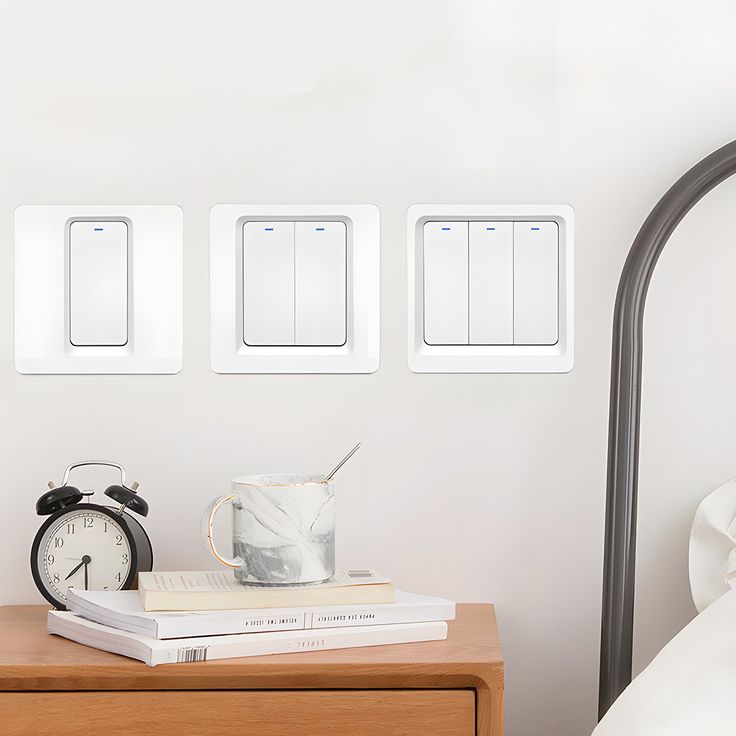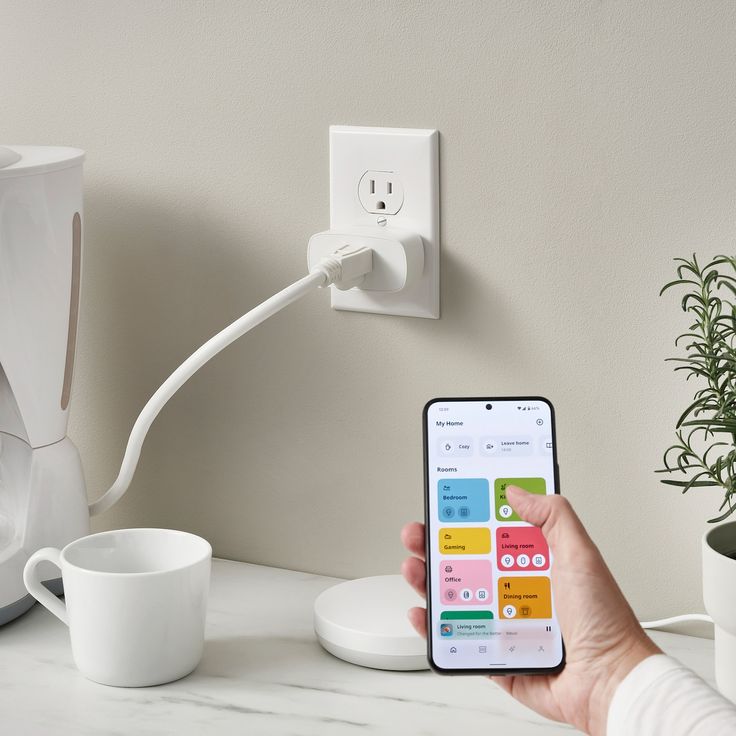Introduction
Smart home technology has rapidly evolved, making our lives easier and more convenient. Among these innovations, smart switches have gained significant popularity, allowing users to remotely control their lighting and appliances through smartphone applications or voice commands. Despite their convenience, connectivity issues can arise, leading to frustrations when your smart switch is not working as intended. In this comprehensive guide, we will explore the various reasons behind connectivity problems, troubleshooting methods, and preventative measures to ensure your smart switch operates smoothly.

Common Reasons Your Smart Switch Is Not Working
Smart switches rely on stable Wi-Fi connections to communicate with your smartphone or smart home ecosystem. A common issue that users encounter is poor or intermittent connectivity. Here are several potential reasons why your smart switch might not be functioning correctly.
-
Weak Wi-Fi Signal
One of the most frequent causes of connectivity problems in smart switches is a weak Wi-Fi signal. Smart switches typically require a strong Wi-Fi connection to operate efficiently. If your switch is located far from your router or in an area with physical obstructions, such as walls, furniture, or appliances, the Wi-Fi signal may be too weak for reliable communication. To resolve this issue, consider repositioning your router to a more central location within your home or investing in a Wi-Fi extender to boost the signal strength in areas where your smart switch is installed. Additionally, using a dual-band router that supports both 2.4 GHz and 5 GHz bands can provide better coverage, as most smart devices operate on the 2.4 GHz band, which is less congested compared to higher-frequency bands.
-
Software Compatibility Issues
Another frequent issue with smart switches not working is related to software. Smart switches rely on firmware updates to stay compatible with the latest smartphone apps and smart home ecosystems. When your smart switch’s firmware is outdated, it may not work properly with newer app versions or features. To alleviate compatibility issues, regularly check for firmware updates through your manufacturer’s app and ensure that both your smartphone and smart switch are running the latest software versions. If you experience connectivity problems after a recent update, try removing and re-adding the device within the app, as this can refresh its connection settings and resolve minor glitches.
-
Network Configuration Problems
Incorrect network settings can also prevent your smart switch from connecting properly. For instance, if your smart switch is configured to connect to a specific Wi-Fi network but is not receiving proper IP address assignments from the router, it may not function. It’s essential to ensure that your router’s settings allow for sufficient device connections, especially if you have numerous smart home devices. For devices that require high bandwidth—like smart speakers or video cameras—ensure that your router has Quality of Service (QoS) settings enabled to prioritize their traffic. Additionally, revisit your router’s DHCP settings to ensure it can assign IP addresses properly, reducing the risk of connectivity issues for your smart switch.

Effective Troubleshooting Steps When Your Smart Switch Is Not Working
When your smart switch is not functioning, a systematic approach to troubleshooting can save time and prevent unnecessary stress. Here are some effective steps you can take to restore full functionality.
Restart Your Smart Switch and Router
The simplest yet most effective troubleshooting step is to restart both your smart switch and your Wi-Fi router. Sometimes, temporary glitches can occur due to network slowdowns or miscommunication between devices. To restart your smart switch, turn it off via the wall switch, wait for about 10 seconds, and turn it back on. Repeat the same process with your router by unplugging it from the power source, waiting for roughly one minute, and plugging it back in. This process can refresh the connection between your devices and the network, often resolving basic connectivity issues.
Reconfigure Your Smart Switch Settings
If restarting your devices doesn’t solve the problem, try reconfiguring the settings on your smart switch. Access the smart home app associated with the switch and navigate to the device settings. Look for options to reconnect or update Wi-Fi settings. Before reconfiguring, delete the smart switch from your app and start the setup process from scratch. Ensure that your smartphone is close to the smart switch during this process to establish a better connection. This approach can resolve connectivity issues linked to incorrect network credentials or device misconfiguration.
Check for Interferences
Smart switches operate over Wi-Fi, making them susceptible to interference from other electronic devices. Microwaves, cordless phones, and certain wireless devices can create interference in the 2.4 GHz band, leading to connectivity issues. To diagnose if interference is the problem, turn off or unplug devices around your smart switch temporarily and monitor its performance. If the smart switch works without interference, consider finding an alternative location for the devices causing disruption or using a Wi-Fi extender to ensure a clear signal path.

Preventative Measures to Avoid Future Connectivity Issues
Once you have resolved the current issues with your smart switch, implementing preventative measures will help maintain connectivity and prevent future problems. Here are some tips to keep your smart switch functioning optimally:
-
Maintain a Strong Wi-Fi Network
Ensuring a robust Wi-Fi network is paramount for seamless smart home operations. If you live in a large house or have multiple connected devices, consider upgrading your Wi-Fi router to a mesh network system. Mesh networks use multiple nodes to provide comprehensive coverage throughout your home, eliminating dead zones where connectivity issues may arise. Moreover, regularly check the performance metrics of your Wi-Fi network through your router’s admin panel to identify any areas needing improvement.
-
Perform Regular Software Updates
Maintaining your smart switch’s software is crucial for preventing compatibility issues with your smartphone or other smart home devices. Set reminders to check for updates at least once a month, or enable automatic updates if the option exists. Staying current with the latest firmware ensures your device benefits from improvements, new features, and security patches that can enhance connectivity.
-
Educate Yourself on Manufacturer Guidelines
Different smart switches come from various manufacturers, each with specific guidelines and requirements for optimal functionality. Take the time to read the installation and user manuals thoroughly. They often contain valuable troubleshooting tips and may highlight common issues encountered with your particular model. Additionally, many manufacturers provide online resources, including FAQs, forums, or customer support, to address additional questions. Familiarizing yourself with these resources can empower you to tackle connectivity problems proactively.

Understanding the Limitations of Smart Switches
As you continue to explore the intricacies of your smart switch and its connectivity, it’s essential to recognize the inherent limitations of smart technology. Smart switches depend heavily on external factors, which may occasionally lead to inconsistent performance.
-
Network Overload
A common challenge in smart home environments is network overload. Home networks may become saturated with devices simultaneously drawing bandwidth, which can hinder the performance of individual connected devices, including smart switches. Regularly assess how many devices are connected to your network, and consider disconnecting older devices that are rarely used. Additionally, upgrading your internet plan to one with higher bandwidth can provide more available resources for your smart devices.
-
Router Limitations
Each router has a limit on how many devices it can effectively manage, and as more smart devices are added to your ecosystem, you can experience slowdowns in connectivity. Consider the specifications of your current router and whether it can support your evolving smart home setup. If you find that you are regularly experiencing connectivity issues, investing in a higher-capacity router may significantly enhance your system’s reliability and performance.
-
Fallback Options for Connectivity
Finally, it is wise to examine alternative methods for controlling your smart switches in case of connectivity problems. Many smart switches come equipped with physical buttons that allow for manual control, circumventing connectivity issues temporarily. Additionally, if your smart switch integrates with a smart home hub, you can leverage the hub’s capabilities to maintain control even while there are connectivity challenges with your router or smartphone.
Final Thoughts on Smart Switch Connectivity
Connectivity issues can be frustrating when they arise, but understanding their potential causes and implementing a range of troubleshooting measures can help restore functionality quickly. From assessing your Wi-Fi signal strength to reconfiguring your device settings and maintaining updated software, there are many proactive steps you can take to enhance the performance of your smart switch. By adopting a comprehensive approach to connectivity—including preventative measures and alternative solutions—you can ensure a reliable smart home experience for years to come.
Embracing the convenience of smart technology is within reach, and with this guide, you now have the knowledge and tools necessary to troubleshoot effectively when your smart switch not working. Don’t let connectivity issues hinder your smart home experience; take control with the insights provided and keep your environment seamlessly connected.
